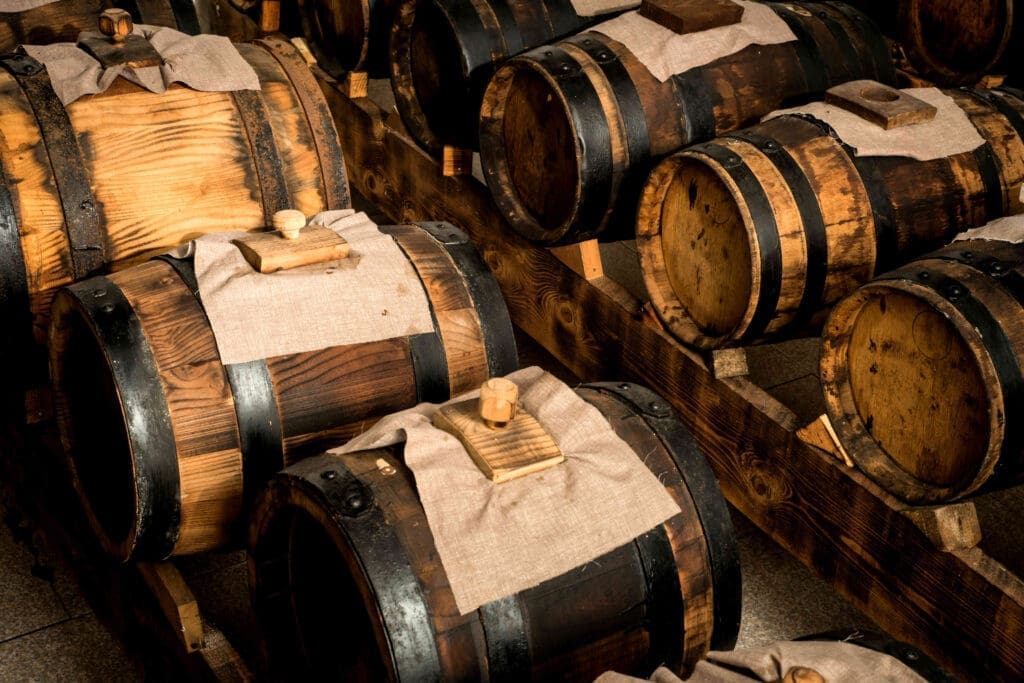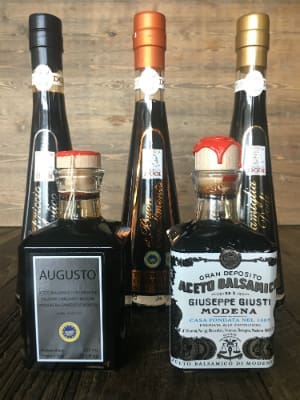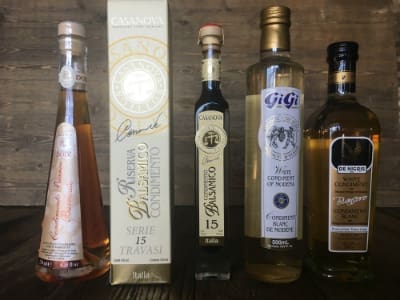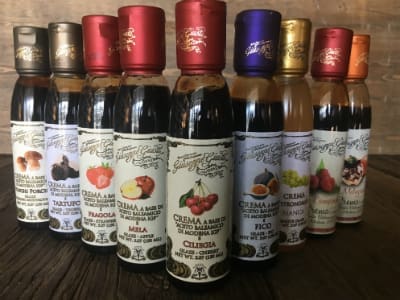Everything you need to know
Everything you need to know
Home / Tips & How To’s /
Like great wines, balsamic is aged to perfection and its cost reflects its purity and authenticity; anything from $200 to a few bucks a bottle.
If you’ve experienced the complex, sweet, woody, syrupy taste of true balsamic from the Modena or Reggio Emilia regions of Italy, you’ll know the difference between the best and lesser imposters is anything but subtle.
The aging process is the key to traditional balsamic.

The aging process or a solera could take a century to produce the purest and most delicious balsamic. Or, be as little as twelve years for lesser grades.
Micro-organisms convert grape must into vinegar (must is the freshly squeezed grape juice, skins, seeds and stems). Then a complex craft follows.
The must is reduced to half over a flame, cooled, fermented for three weeks and then aged in a series of barrels.
The must is reduced to half over a flame, cooled, fermented for three weeks and then aged in a series of barrels.
Unlike aging wine and beer in sealed barrels, balsamic is allowed to breath, resulting in evaporation. The balsamic is decanted into five ever-smaller barrels where evaporation continues, until the aging process is complete, resulting in a rich, fragrant, sticky, syrupy balsamic of concentrated flavours.
Once a year, the balsamic is taken from the smallest cask, which is filled up from the next biggest cask, and so on. The largest cask is topped up with that year’s new vinegar. A never-ending cycle of goodness.
Only approved traditional barrel woods are allowed: cherry, juniper, oak, mulberry, chestnut, ash and acacia. The balsamic producer changes out the wooden barrels every few years. Traditional balsamic is infused with a hint of the taste of the wood it’s aged in.
The longer the balsamic is allowed to age, the better the taste, and like a fine wine, the older it is the more expensive it is.
It won’t be acidic to taste but offers a mellow tartness.
Different Types of Balsamic and How to Use Them
Read the label. Traditional balsamic must pass a stringent test administered by the Consortium of Balsamic Vinegar. The council was created in the early 70’s to prevent producers from selling commercial grade as authentic balsamic. Five judges test the product before it can be labeled Traditional Balsamic vinegar.
Traditional Balsamic
The label also indicates the region where it’s produced, either Modena or Reggio Emilia. Traditional balsamic is always labelled Aceto Balsamico Tradizionale and carries a D.O.P. (“Denominazione di Origine Protetta”) stamp — a European Union certification that guarantees quality, production, and place of origin.
Recognising Traditional Balsamic by Region
Bottle caps are made of wax and have identifying numbers.
Reggio Emilia

Modena

Balsamic Vinegar of Modena
Because demand outstrips supply for traditional balsamic, a newer, controlled industrialized process was created in 2009 by the E.U.
I.G.P status designates the balsamic as made from a restricted 7 varieties of grapes from any region, as long as they are processed in Modena. The I.G.P stamp is yellow and blue.

I.G.P Balsamics with stamp
Condiment Grade Balsamic
This grade can be confusing because there are so many types. Basically balsamic that can’t get a D.O.P designation could be labeled this way.

Condimento (three bottles on left). Not to be confused with White Condiment (two bottles on right) which is predominantly white wine vinegar.
Beyond Balsamic
Balsamic glazes and other condiments have become all the rage these days.

Balsamic Glazes in a rainbow of flavours
Balsamic Glaze/Syrup
Has thickeners added to make it as syrupy as the real thing, but it won’t taste that way. Use to finish dishes or drizzle over cheese.
Balsamic Pearls
Little jellied balls are a perfect garnish, adding both flavour and artistic flair.
Flavoured Balsamic
Just about any flavour infuses glazes these days. Adds another layer to your dish. From vanilla, to smoked, to fruity, there’s a wide range to chose from.
Want to keep up with new recipes, specials and in-store events? Sign-up to our newsletter.